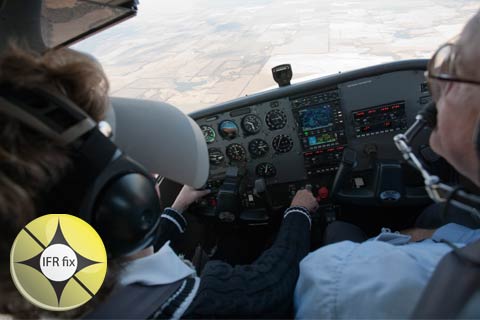
We’re almost home, established on the ILS approach inside the outer marker. Now we’re over the river, two miles from touchdown. Rush-hour traffic on the bridges below is heavy this morning. Sunlight bounces off the waves, filling the cockpit.
“We must be over the water,” says the pilot flying.
So much for “simulated instrument flying” this luminous day. Makes you wonder if it would have been better to keep the airplane tied down and head upstairs to the classroom to fly the sim (which would not have required a preheat or frost removal).
Maybe that’s why they call ‘em “view-limiting devices” and not black holes or blinders. The pilot flying wasn’t trying to cheat. He knew where he was on the approach, and said so in the intensity of the moment. Had he been flying under actual instrument conditions, and seen the river appear beneath a low cloud deck, he might have reacted identically.
How this goes from being a story to being a sermon is in urging that whether the view-limiting device you use makes you look like a welder, a scuba diver, or a student in a college chem lab, remember that you are preparing for the time when you can’t just peel off the gizmo and squint at splendid scenery.
So, how do you know if you are achieving a high-quality simulated-instrument training experience? One way is to look outside at the end of an approach and find yourself surprised at what you see. If the runway isn’t where you expected—or if takes a few seconds to find it—then the mask was up to the task. If you remove it and immediately spot your buddy’s new SUV in the parking lot, no.
Here are two CFII trade secrets. First, we know you peeked. Second, wrestling with peeking and not peeking can be just as distracting as looking for the runway during an approach under IMC—a scenario aired out in the Nov. 4 “ IFR Fix: How to break out.”
That’s right—you can peek and still get burned.
On the other hand, fly a few approaches when the air is moist, bumpy, and opaque, and you’ll be cured forever, or your money back.
Thanks to reader Richard M. Craig for suggesting that this subject be addressed.
Earning an instrument rating is guaranteed to be one of the most challenging, rewarding, and fun projects a pilot takes on during a lifetime in aviation. Each week, this series looks at the IFR experience from a new perspective. Catch up on what you may have missed in the IFR Fix archive.



